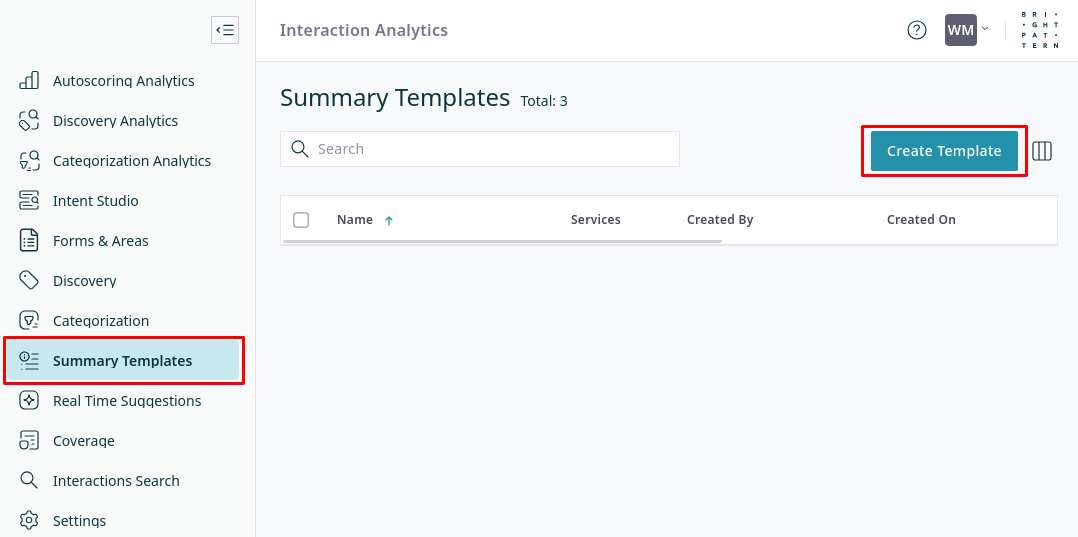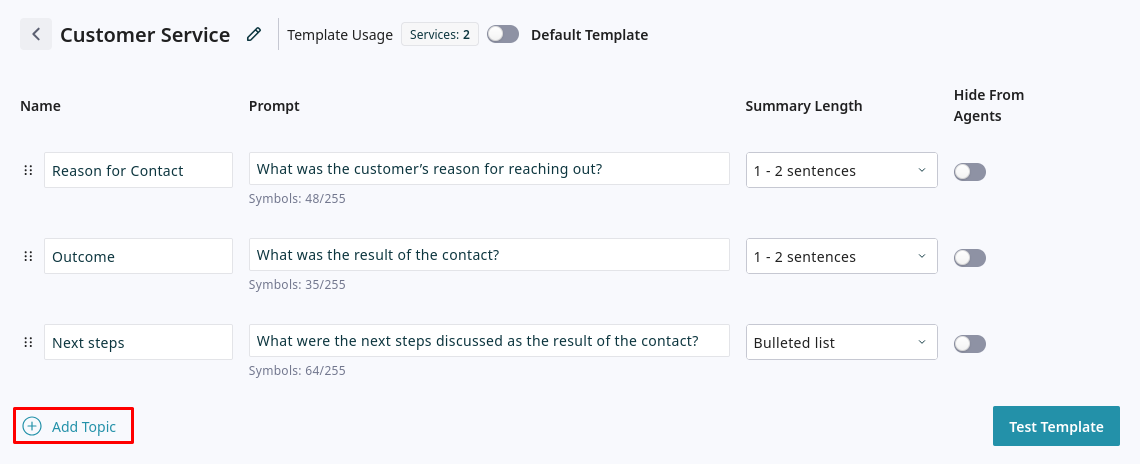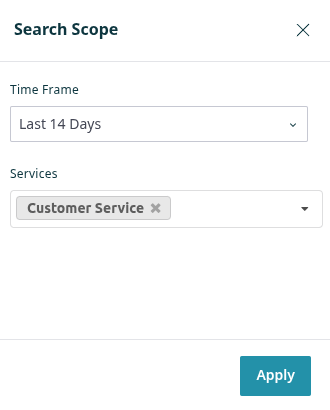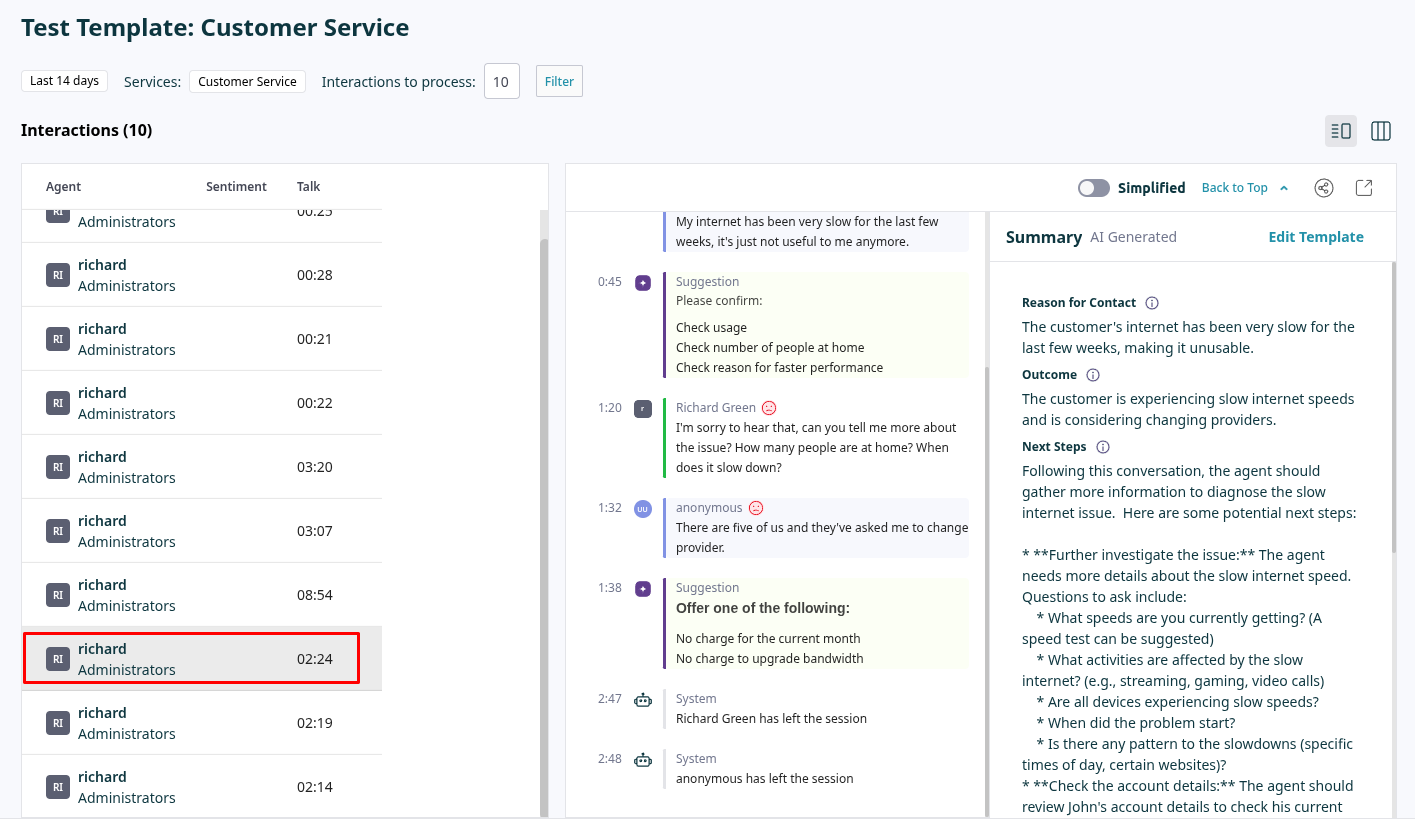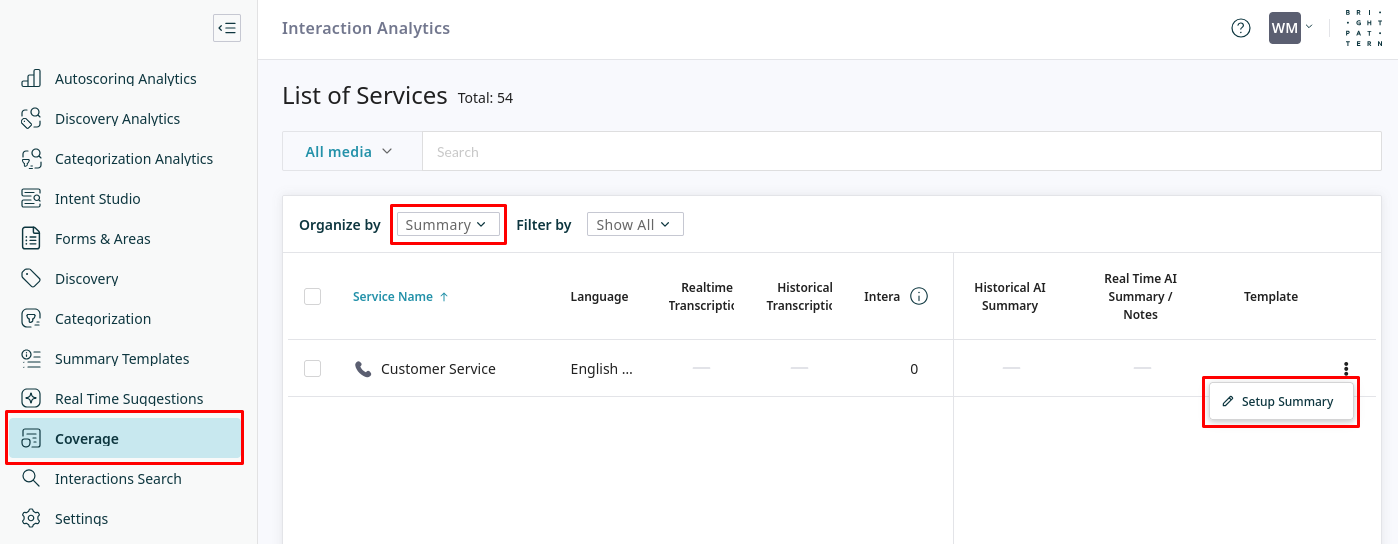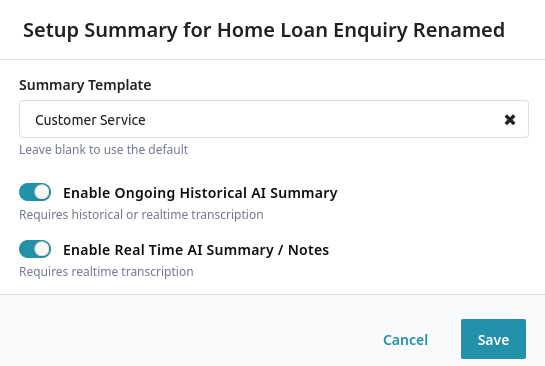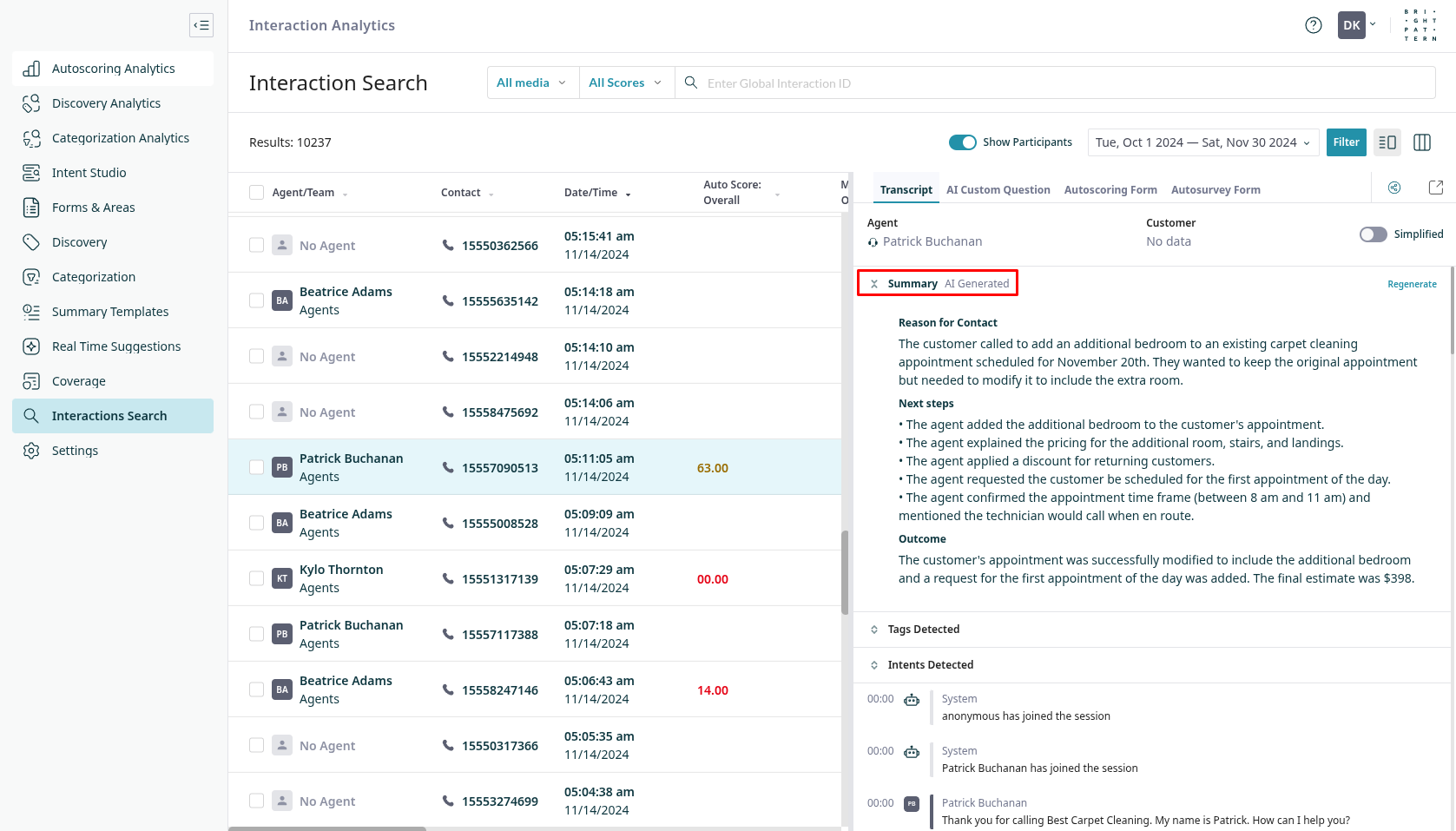Historical AI Summary Quickstart
Historical AI Summaries provide concise overviews of customer interactions, even those handled by multiple agents. You define summary templates that guide the AI on how interaction content should be summarized. Historical summaries assist managers and analysts to perform reviews.
This tutorial explains how to create, test, and deploy a summary template for Historical AI Summaries. Once configured, templates can be used to generate summaries for interactions on assigned services.
Prerequisites
Historical AI Summaries require the interaction transcript. For chat services, no prerequisites are required. For voice services, transcripts must be enabled with the following configurations:
- Call recordings are enabled for the service in either of the following ways:
- By enabling the global Quality Management setting Call Recording to record calls on all services.
- By enabling the service-specific property Record Calls on each service intended to generate AI Summaries.
- Either historical or real-time transcription is enabled for the service:
Procedure
Follow these steps to configure a Historical AI Summary and apply it to your services:
- Create a New Summary Template
- Define Template Topics
- Test the Summary Template
- Configure Summarization for Desired Services
- Test that New Interactions are Summarized
1. Create a New Summary Template
Navigate to the Summary Templates page and click Create Template.
- Enter a descriptive Template Name, for example "Customer Service".
2. Define Template Topics
The template can include any number of topics that you want the AI to address based on the interaction content.
- To add a topic, click Add Topic and define the following:
- Name: The reference name of the topic, which will appear as a heading in the summary.
- Prompt: The question or instruction for the AI to use when generating a response for this topic, for example "What was the primary reason the customer initiated this interaction?" or "Clarify the next steps following this conversation."
- Summary Length: The desired length for each topic's output. If you select "Custom" for the length, specify the length constraint in the prompt (e.g., "Summarize in 50 words or less").
- Use the Hide from Agent toggle for topics that should be hidden from agents during after-call work but remain visible to those who can review interaction history. Note that this setting is only relevant if you are also using this template for Real Time AI Summary / Notes, and there are sections which should not be displayed to agents.
- Name: The reference name of the topic, which will appear as a heading in the summary.
- Click Save.
3. Test the Summary Template
After saving your template, test its effectiveness using actual call data. Click Test Template to open the testing page.
- On the testing page, select the number of interactions to sample, then click Filter.
- From the Search Scope page, specify the Time Frame and Services from which to pull sample interactions for testing, then click Apply.
- Select an interaction from the list, and review the generated summary content for each topic against the actual interaction transcript.
- If the summary is not accurate or relevant, click Edit Template to adjust the topic prompt and regenerate the summary.
- Continue iterating until the template produces satisfactory results for the sampled interactions.
- Click Save before leaving, otherwise changes made during testing will be lost.
4. Configure Summarization for Desired Services
Once tested and finalized, assign your new template (or the default template) to one or more services to generate summaries for new interactions.
- Navigate to the Coverage section, choose Organize by: Summary, and open the Setup Summary for the desired service.
- From the Setup Summary window, configure and enable Ongoing Historical AI Summary.
- From the Summary Template dropdown, select the template you created and tested (e.g., "Customer Service"). You can leave this blank to use the default template.
- To activate summary generation for quality management review, ensure Enable Ongoing Historical AI Summary is on. If this toggle is off, you can still manually generate summaries by selecting an interaction in Interaction Search, and clicking Generate Summary
- Optionally, turn on the Enable Real Time AI Summary / Notes toggle if you are using the template for Real Time AI Summary / Notes.
5. Test that New Interactions are Summarized
To verify AI summary generation for a specific service:
- Navigate to Interaction Search.
- Locate and open an interaction that was processed by the targeted service after Historical AI Summary was configured and enabled.
- Click Summary to review the AI-generated summary associated with the interaction.

